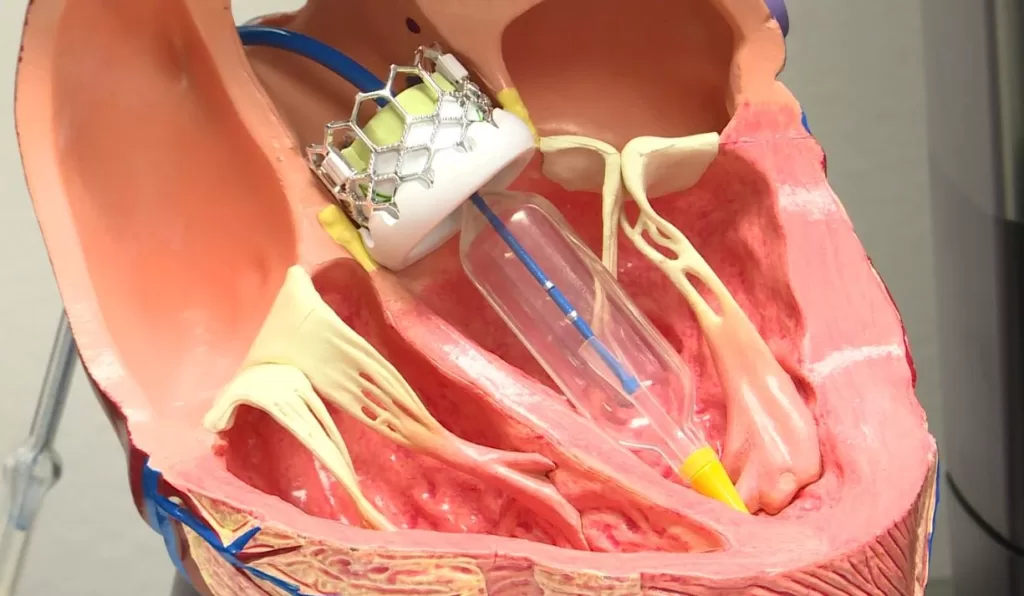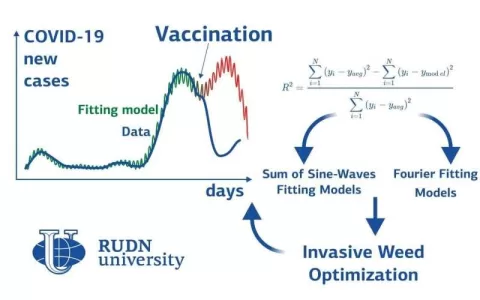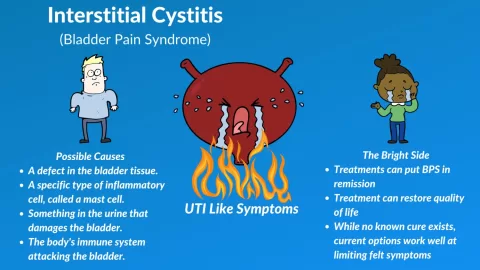Aortic valve replacement (AVR) is a vital surgical procedure designed to address severe aortic valve issues, such as stenosis or regurgitation, that can lead to significant health complications. This comprehensive overview will explore the intricacies of the aortic valve surgery, shedding light on the latest advancements, potential costs, and critical aspects of postoperative recovery. As patients weigh their options between mechanical vs. bioprosthetic valves, understanding the nuances of the AVR procedure becomes essential for informed decision-making. With a focus on improving patient outcomes, this guide aims to provide clarity on the complexities surrounding heart valve replacement, including insights into the heart valve replacement cost. By demystifying these topics, we hope to empower patients and their families as they navigate this crucial medical journey.
The surgical intervention known as aortic valve replacement (AVR) serves as a crucial remedy for individuals suffering from serious aortic valve dysfunctions. This operation, often referred to as aortic valve surgery, can be performed through various methods, including minimally invasive techniques. Patients frequently face a decision regarding the choice of valve replacement, whether opting for mechanical options or bioprosthetic alternatives, each with its own set of benefits and challenges. Additionally, understanding what to expect during postoperative recovery is essential for those undergoing this life-changing procedure. By examining the financial implications and the overall process, patients can better prepare for their aortic valve replacement journey.
Understanding the Aortic Valve Replacement Procedure
Aortic valve replacement (AVR) is a surgical procedure designed to replace a dysfunctional aortic valve, which can either be stenotic (narrowed) or regurgitant (leaky). The importance of this procedure cannot be overstated, as it plays a crucial role in managing conditions that lead to heart failure. The AVR procedure can be performed using two main techniques: Transcatheter Aortic Valve Replacement (TAVR) for high-risk patients, and traditional open-heart surgery for those who are suitable for more invasive procedures. Each method has its own advantages and is selected based on patient-specific factors such as age, overall health, and the severity of the valve dysfunction.
During the AVR procedure, the surgeon carefully removes the damaged aortic valve and replaces it with a prosthetic valve. The choice of valve type—mechanical or bioprosthetic—can significantly impact long-term outcomes. Mechanical valves, while durable, require lifelong anticoagulation therapy to prevent blood clots, whereas bioprosthetic valves may not need such medication but typically have a shorter lifespan. The decision-making process regarding valve selection is often guided by the patient’s lifestyle, age, and the presence of other health conditions.
Postoperative Recovery After Aortic Valve Surgery
Postoperative recovery following aortic valve replacement is a critical phase in ensuring a successful outcome. Typically, patients are monitored in the hospital for 3 to 7 days post-surgery, during which vital signs are closely observed, and any complications are promptly addressed. Patients often experience pain and discomfort at the incision site, and managing this pain effectively is essential for facilitating recovery. Rehabilitation may include physical therapy to gradually increase activity levels, which is vital for regaining strength and mobility.
Once discharged, patients are encouraged to follow a structured recovery plan that includes regular follow-up appointments with their healthcare provider. These visits allow for monitoring of heart function, valve performance, and overall health. It is also during this time that patients receive education on lifestyle changes, such as diet and exercise, which can significantly impact their long-term recovery and heart health. Awareness and management of potential postoperative complications, such as infections or valve dysfunction, are crucial in this period.
Comparing Mechanical vs. Bioprosthetic Valves
The choice between mechanical and bioprosthetic valves is a pivotal decision in the aortic valve replacement process, impacting not only the surgical outcome but also the patient’s quality of life post-surgery. Mechanical valves are made from durable materials and are designed to last a lifetime; however, they necessitate ongoing blood thinner medication to prevent clot formation, posing a risk of bleeding complications. This requirement can be particularly challenging for elderly patients or those with a higher risk of falls.
On the other hand, bioprosthetic valves are made from animal tissue and are generally preferred for older patients because they do not usually require long-term anticoagulation therapy. However, they have a finite lifespan, often lasting between 10 to 20 years, which can necessitate reoperation in younger patients. The ongoing debate in the medical community focuses on balancing the immediate benefits and long-term implications of each valve type. It is essential for patients to engage in thorough discussions with their cardiologists to understand the risks and benefits associated with each option.
The Financial Aspects of Aortic Valve Replacement
The cost of aortic valve replacement can vary significantly based on several factors including the type of procedure, the healthcare provider, and geographical location. Estimates suggest that the total expenses related to the surgery, including hospital stays, follow-up care, and rehabilitation, can range from $50,000 to $200,000. This broad cost range reflects differences in healthcare systems, insurance coverage, and the complexity of each individual case.
Patients must proactively discuss financial obligations with their healthcare providers and insurance companies to gain a clear understanding of coverage options and out-of-pocket costs. Some insurance plans may cover a substantial portion of the expenses, but it is crucial to verify the specifics before proceeding with surgery. Additionally, awareness of potential financial assistance programs or patient support initiatives can aid in alleviating the financial burden associated with aortic valve replacement.
Latest Developments in Aortic Valve Research
Recent research developments in aortic valve replacement are paving the way for improved patient outcomes and surgical techniques. Studies have shown that advancements in valve technology, such as the introduction of newer materials for bioprosthetic valves, may enhance durability and reduce the need for reoperation. Furthermore, ongoing clinical trials are exploring the efficacy of SGLT2 inhibitors, traditionally used for diabetes management, in slowing the progression of nonsevere aortic stenosis, potentially delaying the need for surgical intervention.
Additionally, the recognition of infection risks post-heart surgery has led to increased emphasis on preventive measures and monitoring protocols. Understanding the demographics at higher risk for complications, such as older adults and women, is crucial for developing targeted strategies to improve postoperative care. As the field of aortic valve replacement continues to evolve, staying updated on the latest research findings is essential for both patients and healthcare professionals.
Frequently Asked Questions
What is the Aortic Valve Replacement (AVR) procedure and how does it work?
Aortic Valve Replacement (AVR) is a surgical procedure aimed at replacing a damaged or diseased aortic valve with a new valve. This can be performed through traditional open-heart surgery or via a minimally invasive approach called Transcatheter Aortic Valve Replacement (TAVR). The procedure is crucial for patients suffering from severe aortic stenosis or regurgitation, helping restore normal blood flow and improve heart function.
What are the differences between mechanical and bioprosthetic valves in Aortic Valve Replacement?
In Aortic Valve Replacement, patients can choose between mechanical and bioprosthetic valves. Mechanical valves are durable and can last a lifetime but require lifelong anticoagulation therapy to prevent blood clots. Bioprosthetic valves, made from animal tissues, may not last as long but typically don’t require long-term blood thinners. The choice depends on factors like age, lifestyle, and individual health conditions.
What is the estimated cost of Aortic Valve Replacement surgery?
The cost of Aortic Valve Replacement can vary significantly based on the procedure type and hospital location, generally ranging from $50,000 to $200,000. This total includes surgery, hospitalization, and follow-up care. Patients are encouraged to discuss costs with their healthcare providers and insurance companies to understand their financial responsibilities.
What does postoperative recovery look like after Aortic Valve Replacement?
Postoperative recovery after Aortic Valve Replacement typically involves a hospital stay of 3 to 7 days, followed by home rehabilitation. Patients are advised to gradually resume normal activities and attend follow-up appointments to monitor their recovery. It’s crucial to be aware of potential complications, such as infections, and to communicate any concerns with healthcare providers.
What are the success rates of Aortic Valve Replacement procedures?
Success rates for Aortic Valve Replacement procedures are generally high, with many patients experiencing significant improvements in symptoms and quality of life post-surgery. Factors contributing to successful outcomes include the surgical team’s experience and the patient’s overall health. Ongoing advancements in surgical techniques and technology continue to enhance these success rates.
| Key Points | Details |
|---|---|
| Definition | Aortic valve replacement (AVR) is a surgical procedure for patients with severe aortic valve stenosis or regurgitation. |
| Recent Developments | Studies show 1 in 5 older adults face infection risks post-heart surgery, with women being 60% more vulnerable. Ongoing debates exist between mechanical and bioprosthetic valves regarding long-term survival rates. |
| Surgical Techniques | Two main procedures: Transcatheter Aortic Valve Replacement (TAVR) is minimally invasive, while open aortic valve replacement is more invasive. |
| Recovery Period | Hospital stay typically lasts 3 to 7 days, followed by home rehabilitation and gradual resumption of activities. |
| Cost Considerations | Total costs for AVR can range from $50,000 to $200,000, depending on various factors. Patients should discuss costs with healthcare providers. |
Summary
Aortic valve replacement is a crucial procedure for individuals suffering from severe aortic valve issues, providing significant relief from symptoms and enhancing quality of life. With advancements in surgical techniques and ongoing research, patients can expect improved outcomes and tailored treatment plans. Understanding the complexities of the procedure, including potential risks, recovery, and costs, empowers patients to make informed decisions about their heart health. Continuous education and collaboration between healthcare providers and patients remain vital in navigating the evolving landscape of aortic valve replacement.
The content provided on this blog (e.g., symptom descriptions, health tips, or general advice) is for informational purposes only and is not a substitute for professional medical advice, diagnosis, or treatment. Always seek the guidance of your physician or other qualified healthcare provider with any questions you may have regarding a medical condition. Never disregard professional medical advice or delay seeking it because of something you have read on this website. If you believe you may have a medical emergency, call your doctor or emergency services immediately. Reliance on any information provided by this blog is solely at your own risk.







